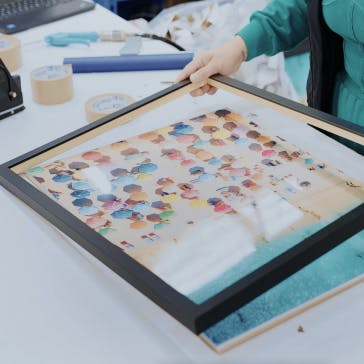Rated 4.6 on Reviews.io
Rated 4.6 on Reviews.io
Home / Homewares / Kitchen & Dining / Kitchen & Cooking / Coconut Palm Tawashi - Hard - Standard & Petit Sizes


Our quality prints

{Missing key :product/printing-info-1-heading}
{Missing key :product/printing-info-1-content}

{Missing key :product/printing-info-2-heading}
{Missing key :product/printing-info-2-content}

{Missing key :product/printing-info-3-heading}
{Missing key :product/printing-info-3-content}

{Missing key :product/printing-info-4-heading}
{Missing key :product/printing-info-4-content}
Our quality frames

{Missing key :product/framing-info-1-heading}
{Missing key :product/framing-info-1-content}

{Missing key :product/framing-info-2-heading}
{Missing key :product/framing-info-2-content}

{Missing key :product/framing-info-3-heading}
{Missing key :product/framing-info-3-content}

{Missing key :product/framing-info-4-heading}
{Missing key :product/framing-info-4-content}
Premium international shipping for $28.99

Order today for delivery before Christmas
14-day returns policy
We offset delivery & packaging carbon emissions on every order.
5-star customer support on live chat
 Product details
Product details
To wash, brush, and scrub : tawashi are organic all purpose tools Vegetables: wash your vegetables with the tawashi so that you do not remove all of the nutrition from the peel of your vegetables Kitchen tools : essential item for Japanese chefs who use it for cleaning vegetables and washing wooden cutting boards, kitchenware, and dishes For non oily dishes, you can easily clean without using dish soap Kamenoko invented the tawashi brush shape and in 1907 and is an Eco scrub brush that is an essential in the Japanese kitchen Most people who try them once, cannot imagine a kitchen without them We usually keep at least two tawashi. One for vegetables because most of the nutrition is in the peel and with a quick scrub you can keep the nutrition. Tawashi removes the dirt for most root vegetables like carrots, beetroot, potato, etc. The other one we keep is for washing pots, kitchen and tableware, as well as many other items in the home. Coconut fibre tawashi = Scrub off When you want to completely peel skin of a vegetable (example : carrot, potato, etc), the strong “Coconut Husk PALM” type is recommended. With the moderate hardness of fibre’s head, the palm material’s strong point in washing is to scraping out dirt. It is suitable for taking out the dirt and a thin skin of roots vegetables, and also the dirt that get into the colander’s mesh. On the hand, the strength of the fibre make it unsuitable for the delicate material so we recommend having another "softer tawashi" for vegetables with softer skin. Coconut fibre washes with its "tips". With the tough and firm touch of the fibre, it lifts stains and grease spotlessly, designed perfectly for scrubbing items and play a good role in home cleaning. We suggest to avoid coated surfaces due to its strength may leave scuff on the surface. Developed with a size that is easy to hold in your hand, Type 1 has been a traditional gem since its founding. The reason why it has been loved for many years is the reliable quality of generously using carefully selected coconut fibre. Suitable for removing mud from root vegetables, peeling thin skins, and washing cooking utensils such as iron frying pans and colanders. The difference in sizes are according to the size of the palm of your hand Dimensions: 8 x 4.8 x 10 cm Material: Palm (coconut fiber), galvanized wire Heat resistant temperature: 90 degrees Made in Japan To learn more about other Tawashi types, please continue reading: There is 3 kinds of materials and the difference lies in the hardness. For example when vegetables will be washed, there are 3 types of materials: Hemp palm TAWASHI = Brush off When you would like to leave and eat the skin of carrot, “HEMP PALM” is recommended. Hemp palm is an all-rounder in washing for it has both strength and pliability. It washes dirt out with these properties. Hemp palm is also used in a broom, which is good at brushing dirt off. The thin tip of a fibre can get into a very small space, which is the reason why many chefs choose hemp palm scrub brush for washing their wood chopping board. It is very convenient to have one hemp palm scrub brush in your kitchen. It can be used to whatever wash the ingredients gently, your important hollowware, or the stainless steel cookware. Kiwame Kiwame series was made of hemp palm skin that cover the trunk. Hemp palm is softer compare to the palm, make it a perfect match with knife and wood chopping board. You can wash for Dish 、Teflon, Glass, Stainless, Enamel ware and more. Sisal linen TAWASHI = Wash off Sisal use its soft fiber to wash the dirts off. Suit for a body care and even a delicate coated pan. When it’s wetted, this material becomes softer. When you would like to simply wash the peel of a something delicate like an apple or a lemon, use the “SISAL LINEN” type. How we use Kamenoko: Start with your new Kamenoko. We use this to wash the skin of our vegetables. Since most of the nutrition is inside the peel, tawashi is the perfect brush to gently clean the dirt off your vegetable before using it. After a few months or when you feel that it is not scrubbing as you wish the kamenoko tawashi graduates to its next job of washing your pots and pans. Tawashi are the perfect tool for cleaning all dishes but particularly iron pots that should not be scratched with a standees steel pad or non-organic scrubber. The same goes true for scrubbing food off your plates. The organic fibres of the tawashi do not scratch your tableware. Finally when your Kamenoko tawashi cannot be used in the kitchen anymore, you can use the tawashi for house work : cleaning the shower or bathroom cleaning dirt on the floor cleaning your tools cleaning anything that you can think of Finally, when your Kamenoko tawashi has been completely used, we can thank them for all their service and let them retire in peace. They are made of organic fibres so they can go back into the earth naturally and the metal wire can be recycled. How to clean Kamenoko: The best way to clean Kamenoko is to simply use two kamenoko to clean each other. Shake dry and hang after use. Because they dry quickly, they do not breed germs the way regular sponges do. To disinfect your Tawashi, you can pour hot water over it. We usually wash our tawashi and wooden cutting boards together by simply pouring 90° water to disinfect without chemicals. A tawashi usually keeps for around 1 year with proper care. Why Kamenoko Tawashi? There are many producers making Tawashi now but Kamenoko is the original. Because of this all their Tawashi are carefully hand made and inspected by senior craftsmen. You can tell the quality of the craftsmanship from the first use of Kamenoko. History of the Tawashi: When western shoes first started selling in Japan, unlike Japanese wooden shoes, western style shoes brought in a lot of dirt from outside. It was therefore necessary for households to have a door mat to keep the outside dirt from entering the house. The founder and first president, Nishio Shozaemon, was producing mats using hemp and palm. During this time in Japan we still used wood burning stoves in the kitchen. The wood and charcoal left the pots and pans very black with soot and were difficult to clean. Mr Shozaemon’s wife took one of his door mats and cut it and placed a wire around it to use for scrubbing. Thus the first Tawashi brush was invented. They agreed that the shape was like a turtle (Kame in Japanese) and since turtles like water it seemed like an appropriate name. Kamenoko means “Turtle Child). Mr. From 1907, create and bring out the “TAWASHI” to the market. From then, they have created many cleaning products for household work. In 2013, this brush gets the Long Life Design Award as a major product hand made since 1907. Quality, durability: chose the best size for the palm of your hand.
 Shipping and Returns
Shipping and Returns
The product will be shipped to you from: Bows & Arrows in Paris, France.
Premium international shipping for $28.99
Arrives soon if you order today! Estimated delivery: Tue 24 Dec – Thu 26 Dec
14-day returns
On items eligible for returns, you have 14 days from delivery to submit a return request. Learn more.
Ordering between the UK and the EU?
There are no hidden fees or additional charges once you’ve paid for your order. Enjoy hassle-free cross-border shopping. Learn more

